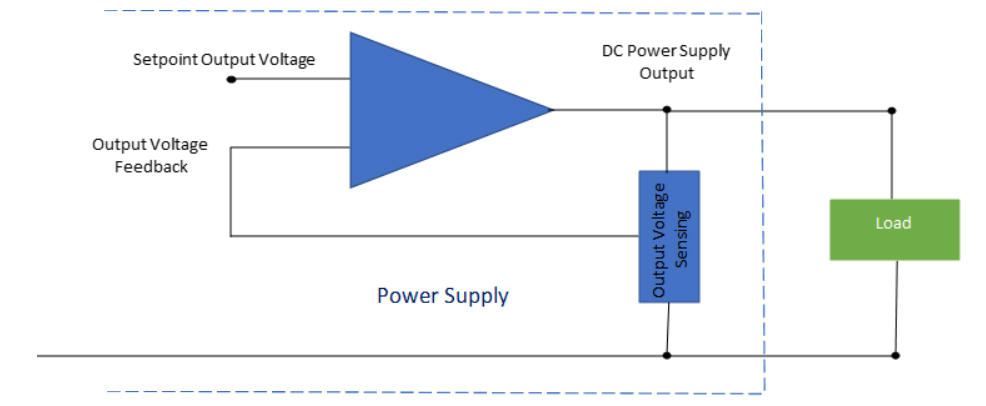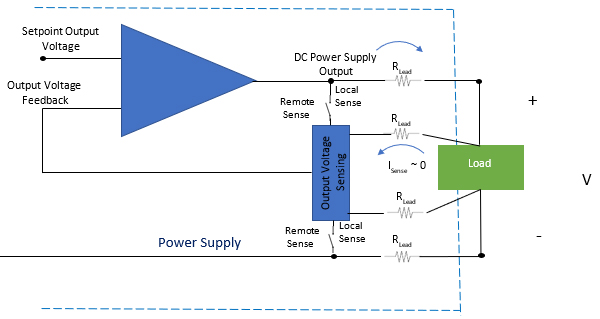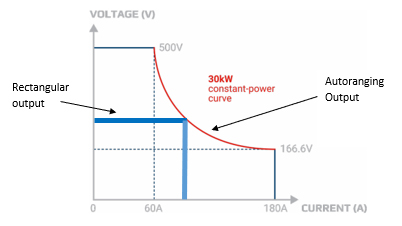Power supply types, functions, and applicationsAn ideal DC power supply provides a constant DC voltage output regardless of the load current. However, no electronic product or other similar device can currently achieve the performance level described in electronics textbooks, where all designs are based on ideal components. So, how do real power supplies differ from theoretical ideal power supplies? Before answering this question, let's take a look at how actual programmable DC power supplies work. There are many types of power supplies, and their specific functions are also different. So let's take a look at the types and functions of power supplies. Programmable DC power supplies have many applications in many industries. We will explore some of the characteristics of power supplies and see how these characteristics give them rich functions to meet diverse application needs. In fact, seemingly simple products can actually contain complex technologies.Overview of how power supplies workThe transformer electrically isolates the AC line from the rest of the circuit. The transformer also steps down or up the voltage of the AC line depending on the maximum DC output voltage required and expected to be possessed by the power supply. The rectifier circuit block converts the AC voltage from the transformer into a unipolar AC voltage. Next, the filtering block converts this unipolar AC voltage into a defective DC voltage with ripple effects. The voltage regulator adjusts the output voltage to the desired level and performs further filtering to make the output a constant DC voltage.Figure 1 is a common block diagram of a DC power supply
These circuit blocks contain many components, but none of them are ideal. Capacitors and inductors have parasitic resistance, parasitic capacitance (in the inductor), and parasitic inductance (in the capacitor). Transistors and diodes have I-V characteristics that can change with temperature. All components have certain tolerances in their parameter values, and they all consume power, have power limitations, and generate noise. These non-ideal characteristics prevent the power supply from being an absolutely constant DC output source.Deviations from Ideal OutputThe output provided by a DC power supply is not always the output programmed by the user. The manufacturer will define a certain DC output accuracy, output precision, or display accuracy based on component tolerances. The manufacturer may also specify a temperature coefficient that can be added to the output tolerance when the ambient temperature exceeds the power supply calibration temperature range. Another reason for the DC output to drop below the programmed value is that the internal resistance of the components in the power supply will see a larger voltage when a high current load is used. Manufacturers specify this effect as load regulation, which is expressed as a percentage error of full voltage. To fully determine the output accuracy of a DC power supply, this load regulation error should be added to the output accuracy.A DC power supply will also have noise on its DC output. All electronic components have inherent noise due to the motion of electrons in metal structures and collisions of electrons. This noise is called Johnson noise. Noise is also generated on the output of the power supply due to conditions on the AC line, environmental electromagnetic interference (EMI), and stray currents on the ground line. As with other electronic instruments, minimizing noise in a power supply requires detailed knowledge of good design techniques. However, no matter how good the design is, noise will be present on the output of a DC power supply.Power Supply TopologyThere are two types of power supply topologies. Power supply designs can be either linear or switch mode topologies. The difference in their design is the rectifier and voltage regulator blocks. In linear designs, current is constantly flowing through the circuit. The advantages of these designs are low noise and low complexity, but they are not very efficient. Linear power supplies have efficiencies of less than 50%. Switch mode power supplies, on the other hand, can have efficiencies of 90%, but they have much higher complexity and output noise. The higher noise is caused by the active components, namely the transistors, which act as switches, switching the power supply on and off at kHz frequencies. The advantage of switch-mode power supplies is that they are smaller and lighter than linear power supplies of equivalent capacity. Switch-mode power supplies can be used with lighter weight and smaller transformers. In addition, the higher the switching frequency, the smaller the inductive components can be.While both topologies are suitable for power supplies up to a few hundred watts, switch-mode power supplies are mostly used in designs exceeding 500 W and even in the kilowatt class. For kilowatt-class power supplies, the transformer will also be very large and heavy.Types of DC Power SuppliesMost power supplies are unipolar devices with a positive output. Both the voltage and current are positive. They operate in only Quadrant I as shown in Figure 2. Power supplies can also have more complex circuits and operate in more quadrants. Bipolar output power supplies operate in Quadrants I and IV. The output voltage can be positive or negative, but the current is always positive. A third type of power supply can operate in Quadrants I and II. This type of power supply is called a bidirectional power supply. In quadrant I, the power supply is a DC voltage source. In quadrant II, a bidirectional power supply has a positive voltage and a negative current. The power supply sinks current and acts as an electronic load. Therefore, a bidirectional power supply has the performance of both devices (DC power supply and DC electronic load).Figure 2 Three types of DC power supplies
Controlling the DC outputLet's talk a little more about the voltage regulator circuit block. The voltage regulator filters the output to minimize the ripple of the DC output, and it also maintains the output voltage at a regulated or programmed level. We can model the voltage regulator circuit as a feedback amplifier, as shown in Figure 3. The output voltage sensing circuit monitors the output voltage and feeds it back to the power amplifier. The voltage output of the power amplifier increases or decreases its output depending on the polarity of the voltage difference at the amplifier input.
Figure 3 shows the output line of a voltage-controlled (output filtering not shown) power supply
When the current drawn by the load is small, it is only necessary to monitor the voltage at the output of the DC power supply. At low load currents, the voltage drop across the wires is not significant. However, at high load currents, the voltage drop across the wires can be significant, and the voltage applied to the load will be lower than the programmed output voltage:Vload = Vsupply – 2·VwireIf the DC power supply is designed with a four-wire connection, where two wires are used to connect the power supply to the load and two wires are used to sense the load voltage, then correction can be made for lower voltages at the load. Figure 4 shows a four-wire connection to the load.Figure 4 shows the output stage with local and remote sensing
The output stage sensing circuit has a high input impedance, so the circuit draws very little current. When the voltage drop across the sense wires is negligible, the voltage sensing circuit measures the actual voltage at the load and feeds that voltage back to the power amplifier of the power supply. The amplifier increases its output voltage by two times the wire voltage to compensate for the wire drop. This feature is called remote sensing and ensures that the output at the load is the desired voltage. When a four-wire connection is not used, the regulator uses local sensing, which means that the output voltage is maintained at the voltage level at the output terminals. Using a 4-wire connection allows for greater accuracy of the load voltage.Output Characteristic OptionsPower supplies can use different methods to deliver power to a load. A typical power supply will have a rectangular I-V output characteristic. The output of the power supply can be any combination of voltage and current values within the rectangular range defined by the maximum rated voltage and maximum rated current. The thick blue line in Figure 5 shows a DC power supply with a rectangular I-V output characteristic. The second method of delivering power is an autoranging output. A DC power supply with an I-V autoranging output characteristic has both rectangular and curvilinear output characteristics. The autoranging output characteristic provides a wider range of load currents and output voltages than a power supply of the same capability with a rectangular output. The black and red curves in Figure 5 are examples of autoranging output characteristics. The advantages of an autoranging output characteristic include:· Full power is available at all points on the red curve. In contrast, a power supply with a rectangular output can only deliver full power at its maximum voltage and current (the rightmost corner of the blue rectangle).· Provides more current than a power supply with a rectangular output at any voltage below the maximum voltage of a rectangular output power supply.· Greater flexibility to meet a wider range of application needs due to the higher current output and voltage. This may eliminate the need for an additional power supply, or to meet the needs of a new or upgraded application.· Achieve comparable I-V performance with a lower power supply, thus helping to save costs.Some autoranging power supplies have a curved output characteristic that only delivers full power over a limited voltage range. Elektro Automatik (EA) power supplies have a "true autoranging" output characteristic, which allows the power supply to deliver full power up to and down to 33% of the maximum rated voltage. Other autoranging power supplies rarely achieve this level of performance. This sets EA apart from many of its competitors.Therefore, the way a power supply delivers power can determine its performance level.Figure 5 Comparison of rectangular and autoranging output characteristics
Improving power supply performancePower supplies can have other advanced features. Two examples are waveform generation and a variety of control interfaces. Power supplies can have built-in function generators for waveform generation based on DC bias. In addition, power supplies can have digital and analog interfaces for communication with PCs, PLCs, and other devices.Bidirectional power supplies, when operating as a load, can convert the absorbed energy into AC power and feed it back to the AC grid with up to 96% efficiency. These power supplies are called regenerative power supplies.In addition to providing an accurate and nearly pure DC voltage, power supplies can do more than just provide the functions described above. With increased functionality comes increased design complexity.ApplicationsMost industries that have electronic components in their products use DC power supplies. Design engineers rely on power supplies to develop new circuits and products. Test engineers rely on power supplies to verify the performance of finished products. In many industries that use electronic circuits and components, designs need to meet a wide range of power, voltage, and current requirements. Therefore, there are many power supply models to choose from, with outputs ranging from as low as 100 W to as high as 60 kW. These models range from bench-top power supplies for designers to rack-mount power supplies for test engineers.In addition to powering, design and test engineers often need to simulate products such as solar panels, batteries, and fuel cells. This is where a bidirectional power supply with a built-in function generator can act as a simulation source to simulate a battery, battery charger, fuel cell, or solar panel. At the same time, the power supply can act as a load to simulate a discharged battery or the circuit that is powered by the battery, solar cell, or fuel cell.The built-in function generator can simulate noise and other interference on the DC power line to verify that the product can withstand a certain level of stress. The function generator can also simulate waveforms to test compliance with specific standards, such as those in the automotive and avionics industries.DC power supplies are important equipment required for the design and testing of electronic products. The variety of electronic products has also led to a variety of power supply types and power supply functions.I won't go into detail here.Power supplies are much more complex than what is described in electronics textbooks. Their performance is certainly not at the level described in textbooks. By explaining how power supplies work and the differences in performance, we hope that you will gain a deeper understanding of the technology that is inside the products and that electronics engineers need.





